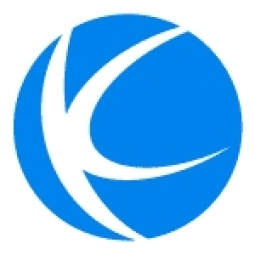下载PDF
Blue Clover Thinks Globally, Speaks Locally
技术
- 平台即服务 (PaaS) - 数据管理平台
适用行业
- 电子产品
适用功能
- 离散制造
用例
- 自动化制造系统
服务
- 云规划/设计/实施服务
挑战
Blue Clover Devices 是一家在中国和美国设有办事处的国际公司,面临着以多种语言和货币开展业务的挑战。该公司的采购订单和库存管理由两个独立的系统处理,甚至无法相互通信。这种缺乏整合导致效率低下并阻碍了公司的发展。该公司需要一个可以处理其全球运营并提高效率的解决方案。
关于客户
Blue Clover Devices 是一家屡获殊荣的原始设计制造商 (ODM),为世界上一些最受欢迎的数字设备生产 UL 认证的电源和音频配件。该公司业务遍布全球,在中国和美国设有办事处。自 2003 年成立以来,Blue Clover 不断发展,专注于提高效率,以此作为成功业务扩展的手段。该公司的产品广泛应用于各种数字设备,使其成为电子行业的重要参与者。
解决方案
Blue Clover Devices 实施了 Kenandy 云 ERP,这是一个专为制造商设计的系统。Kenandy 不仅支持多种语言,还支持制造业。这是 Blue Clover 的一个重要差异化因素。该系统实施速度快、使用简单,具有拖放模板,用户可以轻松创建自定义对象、流程和仪表板。借助 Kenandy,Blue Clover 的采购订单和库存管理功能以及许多其他生产力功能已无缝集成。该公司还发现,添加自己的自定义对象(例如样品、测试报告和监管证书)变得非常容易,这些对象不仅可以连接和搜索,还可以使业务运行得更高效、更有效。
运营影响
相关案例.

Case Study
Remote Temperature Monitoring of Perishable Goods Saves Money
RMONI was facing temperature monitoring challenges in a cold chain business. A cold chain must be established and maintained to ensure goods have been properly refrigerated during every step of the process, making temperature monitoring a critical business function. Manual registration practice can be very costly, labor intensive and prone to mistakes.

Case Study
Cloud Solution for Energy Management Platform-Schneider Electric
Schneider Electric required a cloud solution for its energy management platform to manage high computational operations, which were essential for catering to client requirements. As the business involves storage and analysis of huge amounts of data, the company also needed a convenient and scalable storage solution to facilitate operations efficiently.

Case Study
Leveraging the IoT to Gain a Competitive Edge in International Competition
Many large manufacturers in and outside Japan are competing for larger market share in the same space, expecting a growing demand for projectors in the areas of entertainment, which requires glamor and strong visual performance as well as digital signage that can attract people’s attention. “It is becoming more and more difficult to differentiate ourselves with stand-alone hardware products,” says Kazuyuki Kitagawa, Director of Service & Support at Panasonic AVC Networks. “In order for Panasonic to grow market share and overall business, it is essential for us to develop solutions that deliver significant added value.” Panasonic believes projection failure and quality deterioration should never happen. This is what and has driven them to make their projectors IoT-enabled. More specifically, Panasonic has developed a system that collects data from projectors, visualizes detailed operational statuses, and predicts issues and address them before failure occurs. Their projectors are embedded with a variety of sensors that measure power supply, voltage, video input/ output signals, intake/exhaust air temperatures, cooling fan operations, and light bulb operating time. These sensors have been used to make the projector more intelligent, automatically suspending operation when the temperature rises excessively, and automatically switching light bulbs. Although this was a great first step, Panasonic projectors were still not equipped with any capability to send the data over a network.








